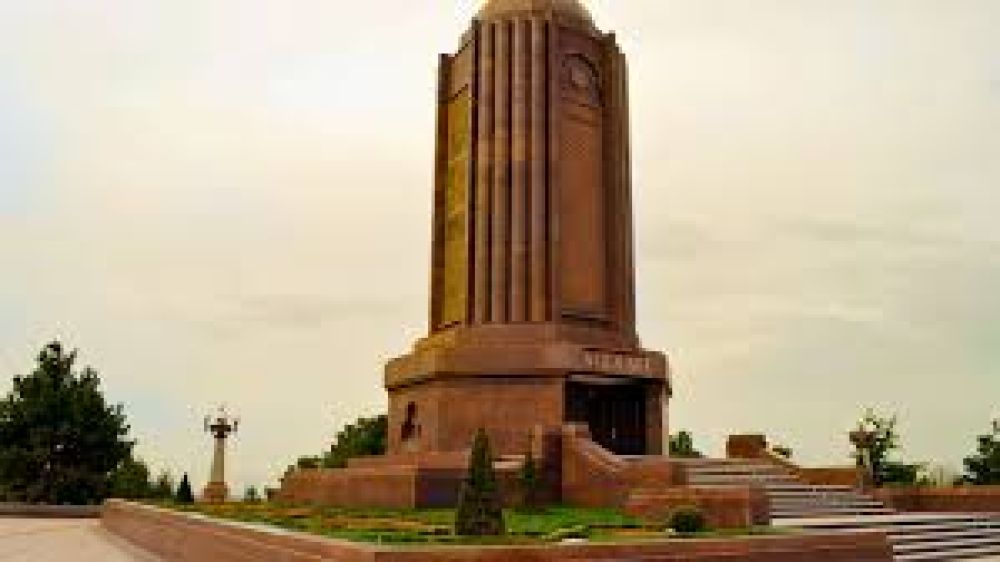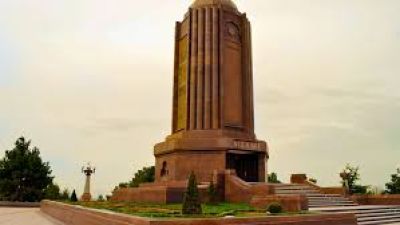

Discover the cultural significance and beauty of the Nizami Mausoleum on a guided tour that leads you through the life and works of the great 12th-century poet, Nizami Ganjavi. This grand architectural monument, built in honor of the poet, stands as a testament to his influence on Azerbaijani literature and Persian poetry. As you explore the mausoleum, your tour guide will share fascinating stories about Nizami's life, his famous literary contributions such as the Khamsa ('Five Treasures'), and the symbolism in the mausoleum's design. The tour will also provide insights into the architectural style of the monument, which reflects the fusion of Azeri culture with Islamic influences; it's a great opportunity for photography enthusiasts and history buffs alike.
Immerse yourself in the rhythmic cadences of Persian poetry at a special reading event held at the Nizami Mausoleum. Celebrate the legacy of Nizami Ganjavi as local poets and narrators recite excerpts from his renowned works, including 'Layla and Majnun', and 'Khosrow and Shirin'. The recitations are often accompanied by traditional Azeri music, creating a mesmerizing atmosphere that transports visitors back to the era of the poet. The event reconciles the past with the present as participants reflect on Nizami's impactful narratives that have stood the test of time and continue to resonate with people from all walks of life.
Delve into the art of Islamic calligraphy with a hands-on workshop at the Nizami Mausoleum. This workshop invites both beginners and experienced artists to learn and practice the intricate skills of writing in various styles of Arabic script. A skilled calligrapher will guide you through the fundamental brush strokes and techniques used to create beautiful inscriptions. Participants will have the opportunity to create their own souvenir calligraphy pieces inspired by Nizami's poetry. The workshop emphasizes the meditative process of calligraphy and its historical significance in preserving literature and art in Azerbaijani culture.
Take part in an enriching lecture about the extensive cultural heritage of Ganja and the role of Nizami Ganjavi in shaping Azerbaijani identity. Scholars and historians present engrossing discussions on various topics including the historiography of the region, the impact of Nizami's intellectual and artistic contributions, and the broader contexts of his works. These sessions often conclude with a question-and-answer segment, allowing participants to engage with the experts and gain deeper understandings of Azerbaijan's rich history and the significance of the Nizami Mausoleum as a cultural landmark.
Experience the vibrant culture of Azerbaijan with a stunning performance of traditional music and dance at the majestic Nizami Mausoleum. Local musicians and dance troupes bring the courtyard to life with performances that showcase Azeri folk songs and the rhythmic elegance of dances such as the Mugham and Lezginka. The melodies played on instruments like the tar, kamancha, and daf create a captivating ambiance that reflects the spiritual essence of Nizami's poetry. This event provides an unforgettable introduction to Azerbaijan's performing arts and a celebration of its timeless traditions.
Explore a curated exhibition of photographs that chronicles the architecture, cultural events, and day-to-day life in Ganja with a focus on the Nizami Mausoleum. The diverse collection includes historical images that trace back to the mausoleum's construction and contemporary shots that capture its ongoing relevance in society. Photographers from Azerbaijan and beyond present their works, offering unique perspectives that highlight the intricate details of the mausoleum's design and the ways in which it continues to inspire people. The exhibition is both a tribute to the mausoleum and a visual exploration of its place in the fabric of modern Ganja.
Stroll through a bustling artisan fair nearby the Nizami Mausoleum where local craftspeople display and sell their handmade goods. The fair provides a glimpse into the rich artisanal traditions of Azerbaijan, featuring items such as intricately patterned carpets, delicate ceramics, and ornate metalwork. Visitors can purchase unique souvenirs, including jewelry, textiles, and miniature paintings that often draw inspiration from Nizami's literary themes. Engage with artisans, watch them at work, and learn about the time-honored techniques that have been passed down through generations. The fair is an excellent opportunity for cultural exchange and to support the local creative community.
Indulge your senses on a tour of a traditional Azerbaijani herb and spice market located in the vicinity of the Nizami Mausoleum. Guided by a local expert, you'll learn about the various spices used in Azeri cuisine, their origins, and their culinary applications. You'll get to sample a variety of aromatic herbs and spices and discover the secrets behind the flavorful dishes mentioned in Nizami's poems. This tour is not only a treat for the palate but also an educational journey that provides insights into the gastronomic landscape of Azerbaijan and its historical connection to the Silk Road trade route.
Venture beyond the Nizami Mausoleum with a historical walking tour of Ganja City. This tour will lead you through the old streets and landmarks that illustrate the city's long history as a key cultural and industrial center in the Caucasus. Highlights include the medieval fortress walls, the 17th-century Shah Abbas Mosque, and various other historical buildings and museums. Knowledgeable guides will share tales of the city's past rulers and events, offering a comprehensive overview of how Ganja's historical developments are interwoven with the story of Nizami Ganjavi and his enduring impact on the region.
Join a hands-on cooking class that focuses on dishes mentioned in Nizami Ganjavi's poetry or typical to his era. Participants will be guided through the process of preparing traditional Azerbaijani recipes, learning about the ingredients and techniques integral to Azeri cuisine. The class provides a fun and interactive environment where you can gain culinary skills and insights into the historical dining preferences of the region. After the class, enjoy the fruits of your labor by sitting down to a communal meal where stories and laughter are shared over the delicious dishes you've helped to create.
